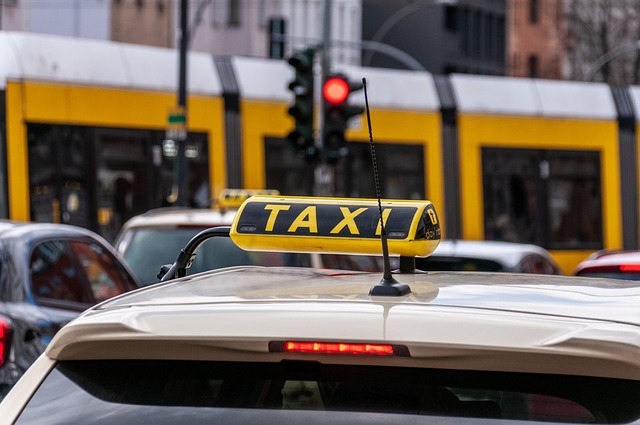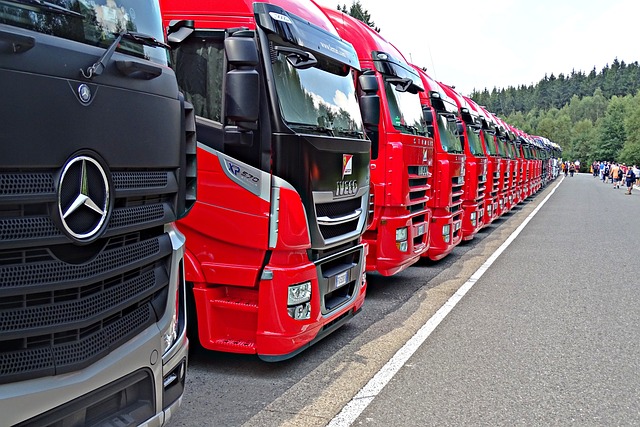Looking to register your car in California? This comprehensive guide walks you through the entire process, from understanding eligibility requirements to paying registration fees. First, ensure your vehicle meets state standards. Gather essential documents, including proof of ownership and insurance. Next, perform a DMV VIN verification to confirm your car’s details. Fill out the registration application accurately, then pay the necessary fees to receive your personalized license plate. Simplify the process with these clear steps.
- Understand Eligibility Requirements for Car Registration in California
- Gather Necessary Documents for Car Registration
- Perform DMV VIN Verification Step-by-Step
- Complete the California Vehicle Registration Application
- Pay Car Registration Fees and Receive Your Plate
Understand Eligibility Requirements for Car Registration in California

Before you begin the registration process, it’s crucial to understand the eligibility requirements for car registration in California. To register your vehicle, you must first establish residency within the state, as proof of California residency is a fundamental prerequisite. Additionally, your car must meet all safety and emission standards set by the Department of Motor Vehicles (DMV). One essential step involves completing a DMV vin verification, ensuring that the Vehicle Identification Number (VIN) is accurate and matches the vehicle’s characteristics.
Among other things, the eligibility criteria also include ensuring that your car has a valid registration in its previous state of residence and undergoing a mobile vin inspection or a standard VIN inspection to confirm the vehicle’s history and identify any potential issues. These checks are vital for maintaining the integrity of California’s vehicle registration system.
Gather Necessary Documents for Car Registration

Before you start the registration process, make sure to gather all the essential documents required by the California Department of Motor Vehicles (DMV). This includes your vehicle’s registration certificate from the previous state, a valid driver’s license, proof of insurance, and perhaps most importantly, the Vehicle Identification Number (VIN) verification. You can conduct a mobile VIN verification or obtain a vin inspection report to ensure your car is not stolen or has any outstanding issues.
Additionally, you’ll need to provide evidence of vehicle ownership, which can be in the form of a title or a lienholder’s release if the car is financed. Keep these documents organized and readily available to streamline the registration experience at the DMV.
Perform DMV VIN Verification Step-by-Step

Performing a DMV VIN (Vehicle Identification Number) verification is a crucial step in registering your car in California. Here’s a straightforward guide on how to do it:
1. Prepare Your Documents: Before heading to the DMV, gather all necessary documents like your driver’s license, proof of insurance, and the title for the vehicle you’re registering. Additionally, have the vehicle’s VIN readily available as you’ll need to input it during the verification process.
2. Visit the DMV or Use a Mobile VIN Inspection: You can complete this step at any California DMV field office. Alternatively, many third-party services offer mobile VIN inspection and verification services, allowing you the convenience of having the process done at your location. During the inspection, the official or technician will cross-reference the provided VIN with their records to ensure it matches a valid vehicle in their system. This step is essential as it helps prevent fraud and ensures you’re registering a legitimate vehicle.
Complete the California Vehicle Registration Application

To begin the registration process, you’ll need to complete the California Vehicle Registration Application, available at your local DMV office or online. This form requires detailed information about your vehicle, including its make, model, year, and unique identifier known as the Vehicle Identification Number (VIN). Accurate VIN verification is a crucial step in ensuring that your vehicle’s details match the records. Consider using a mobile vin verifier for this purpose to streamline the process.
Fill out the application honestly and thoroughly, as any discrepancies or false information could lead to delays or issues with registration. Along with the application, you’ll need to present valid identification, proof of insurance, and the necessary fees. If your vehicle is new, a vin inspection might be required before registration. Ensure all documents are in order to avoid complications during submission at the DMV.
Pay Car Registration Fees and Receive Your Plate

After completing your vehicle’s registration application at the DMV or through their online services, the next step is to pay the required fees. These fees vary depending on the type of vehicle and its age. You can typically make the payment using a debit or credit card, check, or money order. Once your payment is processed, you will receive official notification, along with your unique Vehicle Identification Number (VIN) verification label. This label confirms that your car has passed the required inspections, including a crucial dmv vin verification process to ensure vehicle authenticity.
The California Department of Motor Vehicles (DMV) issues personalized license plates after verifying your vehicle’s registration and inspection. You can choose between standard or custom plates, each with specific designs and options. Ensure you receive both the registration documents and license plates before taking your car on the road legally. Consider opting for a mobile vin verification or mobile vin inspection service to streamline this process, making it more convenient for busy individuals who prefer a quick and efficient transaction.
Registering a car in California is a straightforward process, but understanding the requirements and gathering the right documents is essential. By completing the DMV VIN verification, submitting a well-filled application, and paying the necessary fees, you’ll be on your way to legalizing your vehicle. Remember to keep your registration up to date to avoid any penalties. Happy motoring!



